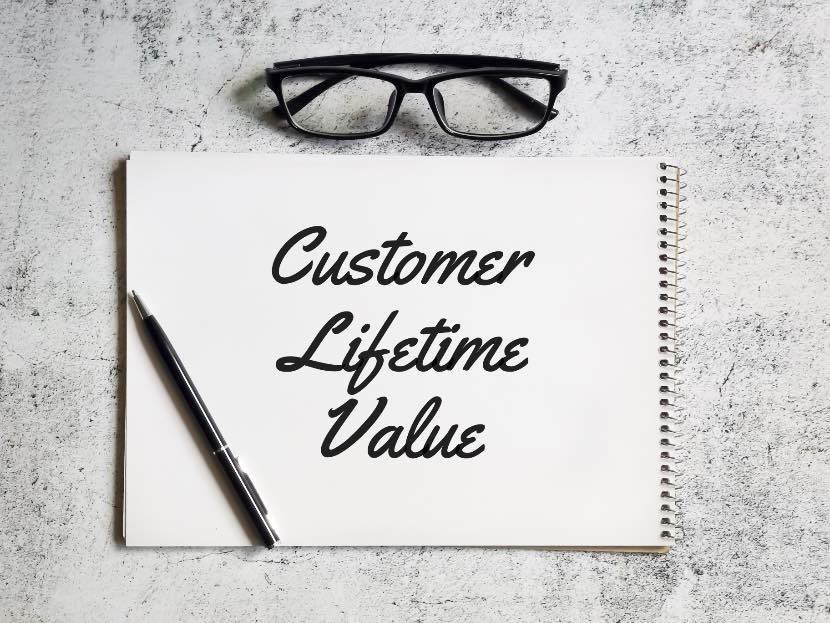The Why, What, And How of Customer Lifetime Value

Finding Your CLTV And Making The Most Of It
Why should you care about Customer Lifetime Value (CLTV)?
The simple answer is profits! A Harvard Business School research report found that increasing customer retention rates by 5% increases profits by 25% to 95%. Customer retention helps businesses recoup the investment they make when acquiring customers. Anything beyond the initial purchase is extra sales at typically higher profit margins. Because there are almost no additional costs to the business, a higher CLTV equals more sales and profits.
To help us understand CLTV, take the example of a one-time software purchase and a SaaS. In the one-time purchase example, CLTV is low as there isn’t much further business interaction besides the initial purchase order. The SaaS model company’s relationship with the customer is longer as they continually use the product as a service and pay as they go. The one-time purchase software is generally at a higher initial price, but with a SaaS model, the potential long-term income is higher if looked at over the years.
Start Understanding Your Customer Lifetime Value
So, where does one start to improve CLTV? First, as a business leader, you need to understand what it is; Customer Lifetime Value equals Customer Value multiplied by the Average Customer Lifespan. To find CLTV, you need to calculate the average purchase value the average customer makes, then multiply that number by the average number of purchases. You can also look at CLTV as the gross profit a customer delivers to your business in their lifetime.
Formula: Customer Lifetime Value (CLTV) = (Customer Value * Average Customer Lifespan)For example, a typical restaurant customer visits once per month and spends $17 per visit over an average lifetime of 10 years. The customer lifetime value would be $17 x 12 x 10 = $2,040.
Formula: Customer Value (CV)= (Total Customer Benefits - Total Customer Costs)For example, a typical restaurant customer found $27 in benefits and the business $10 in acquisition costs. The customer value would be calculated as $27 – $10 = $17.
The last number you need to find is the Customer Acquisition Cost (CAC). CAC divides all the costs spent on acquiring customers, i.e., sales and marketing costs, by the number of customers acquired in the period the money was spent.
Related Links: Top 10 Tips To Improving Your Customer Service Training
What Is The Minimum Customer Lifetime Value You Need
Generally speaking, your CLTV should be at least three times greater than your Customer Acquisition Cost (CAC). In other words, if you spend $100 on sales and marketing to acquire new customers, those customers should have a CLTV of at least $300. This ensures that the business makes enough money to make acquiring the customer profitable.
In some cases, sales and marketing costs may be a considerable investment at the beginning of the customer’s relationship. Still, with a higher CLTV, the customer’s overall profitability will be higher if you look at a longer timeline. Examples of this can be seen in capital-intensive or long sales cycle businesses. It may take years of sales and marketing efforts to get the customer to the point of purchase. Still, the real money comes with a long-term and continuing business relationship with the customer.
Take, for instance, a supplier of a hardware product for a retail store. It might take lots of outreaches and negotiations before the customer makes a purchase order. If the retailer only buys once in a small quantity, that business opportunity is a loss for the company. On the other hand, if that same retailer continually comes back with new contracts for years, they will yield a higher CLTV worth the upfront investment to capture.
Related Links: 6 Ways To Upgrade Your Customer Experience Strategy
How To Increase Your Customer Lifetime Value
As we can see, CLTV increases the longer customers remain with the business. But, to grow it, there are only a few factors a business can control and improve:
- Customer success and support teams directly impact CLTV throughout the customer journey. Customer success managers and customer support representatives are crucial in resolving issues and making recommendations that improve customer retention and lower customer churn. The closer the relationship your after-sale teams have with your customers, the more chances the business has to understand what the customer needs and even upsell even more solutions.
- Business decisions such as product development can impact CLTV. A business can bring long-term value to the customers, making them want to continue to turn to the business for their needs. The more useful, feature-rich, and easy-to-use a product is, the less likely the customer would want to switch to a competitor’s product.
- Customer experience is a significant factor in someone becoming a loyal customer. The overall experience of how businesses communicate to customers affects their likelihood of coming back. All customer interactions and touch-points are considered part of the customer experience. Businesses can design how each exchange is made to optimize how customers see and feel about the business. Considerations to the customer journey can be made to ensure the customer relationship from the initial point of contact to after-sales care is accounted for in the business’s plans.
Related Links: 9 Steps To Building A Customer Journey Map and 3 Tips To Make It Great
These three areas of a business can help extend CLTV, thus helping your business improve its profitability. For more insights into improving customer service, please check our insightful blog articles.
